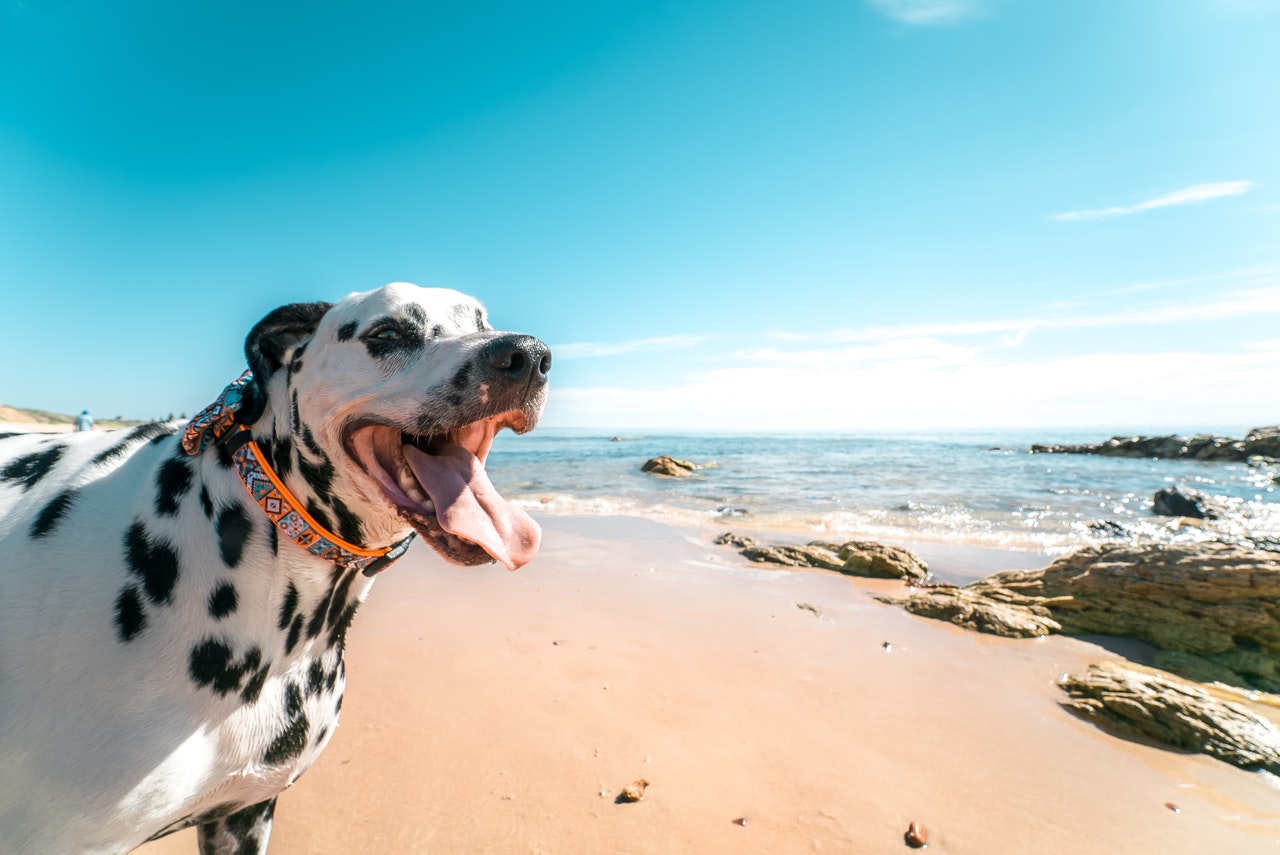
Acute moist dermatitis, often known as hot spots in dogs, is a condition that dogs suffer from during the summer. Acne is a medical word for red, weeping, and bald patches of skin that generally appear out of nowhere and are notoriously difficult to treat.
If your pet scratches excessively, you may notice that the area around the scratch is red and inflamed. Atopic dermatitis, anal vasculitis, demodicosis, and other itchy skin diseases are among the underlying reasons. Traumatic itching almost always results in a piercing of the skin’s protective layer.
Microbes that naturally inhabit the skin begin to proliferate in the affected area, resulting in an infection. Because of the high level of irritation caused by the bacterial colonization and the resulting skin damage, the lesion is more likely to lead to self-harm and subsequent injuries. Large patches of affected skin will form as a result of many of these hotspots becoming infected.
What Puts Dogs At Risk For Hot Spots?
Constant skin-gnawing and biting is the reason behind hot spots. Inflammation and subsequent infections are caused by the abrasions caused by recurrent skin contact, making the region even more irritating.
As a result of the dog’s increased irritability, the destructive behavior persists, leading to the development of a hot spot. Because of their thick, fluffy coats, some dog breeds are more prone to developing hot spots than others. Golden Retrievers, St. Bernard’s, German Shepherds, Labrador Retrievers, and Rottweilers are just a few of the many dog breeds on this list.
Hot spots are more common in dogs who reside in high-humidity areas or whose hair/skin is constantly wet due to swimming or bad weather. To make matters worse, wet hair is more likely to form mats, which act as a breeding ground for microorganisms because they trap moisture and heat.
Identifying The Signs And Symptoms
A hot spot is a huge sore that is red, itchy, painful, discolored, and moist that appears out of nowhere. They can be located in areas of the body that are more prone to allergic reactions (around the ears, neck, face, tail base, and flanks).
As part of a more thorough assessment of hot spots and their suspected underlying causes, several of the following tests may be performed:
- to check for external parasites, a visual examination is necessary
- cytological assessment of an impression smear
- scrapping the skin to see whether there are any mites present
- Immunoassay for a particular allergen
- a skin biopsy is required
How To Avoid Irritated Skin Areas
Preventing hot spots from growing in the first place is frequently easier than treating the sores that have already formed. Often, a dog’s hot spot is the result of a recurrence of an existing infection or irritation. Preventing hot spots in your dog can be made easier if you address the underlying causes. Preventing dog skin infections can be accomplished in a number of ways.
- Ensuring a dog’s diet is rich in essential nutrients is crucial for preventing skin problems like hot spots and dermatitis.
- Flea prevention is important because of the irritating bites that can lead to your dog licking and scratching themselves. One of the key causes of hot spots can be avoided if you provide your dog with appropriate preventive flea prevention medicine. As a bonus, you’ll be able to keep your dog safe from a variety of flea-borne illnesses.
- Finding out what causes your dog’s skin to become prone to hot spots is the first step in preventing them in the future. Your dog may have eczema, an allergy, or an infestation of stinging or biting insects causing skin inflammation.
- After a bath or a swim, make sure that your dog’s coat is completely dry. Your dog’s coat gets saturated more frequently, therefore you should be more vigilant in your search for hot spots. If your dog has long, thick hair that takes a long time to dry, this is an absolute must. Dogs should be bathed with a dog shampoo after swimming in the ocean, ponds, or other standing bodies of water to remove any pathogens or contaminants from their skin and fur.
- Hot areas might be more dangerous for dogs with weak immune systems. It is possible that adding vitamins and supplements to your dog’s daily diet will aid in the development of his immune system and help him fight against infection.
Treatment For Hot Spots
If you feel that your dog may be suffering from a hot spot, the first step is to take him to the veterinarian. Waiting until the problem goes away on its own may be tempting, but doing so will make the situation worse. For your veterinarian to be able to effectively treat the hot spot and prevent it from repeating, he will first need to diagnose the underlying reason. In addition to a thorough physical examination, they may suggest further testing, such as a skin scrape to check for parasites.
Once the underlying reason of your dog’s itching has been identified, your veterinarian will prescribe the most effective medication for your dog. Fortunately, after your veterinarian has started treating your dog’s hot spot, the majority of canines will see a significant improvement very quickly. Most of the time, the hot area goes away in as little as 3–7 days after the treatment is initiated.
Giggle Pets does not provide medical advice for animals – all content is general information and you should always seek professional advice from your veterinarian first.






